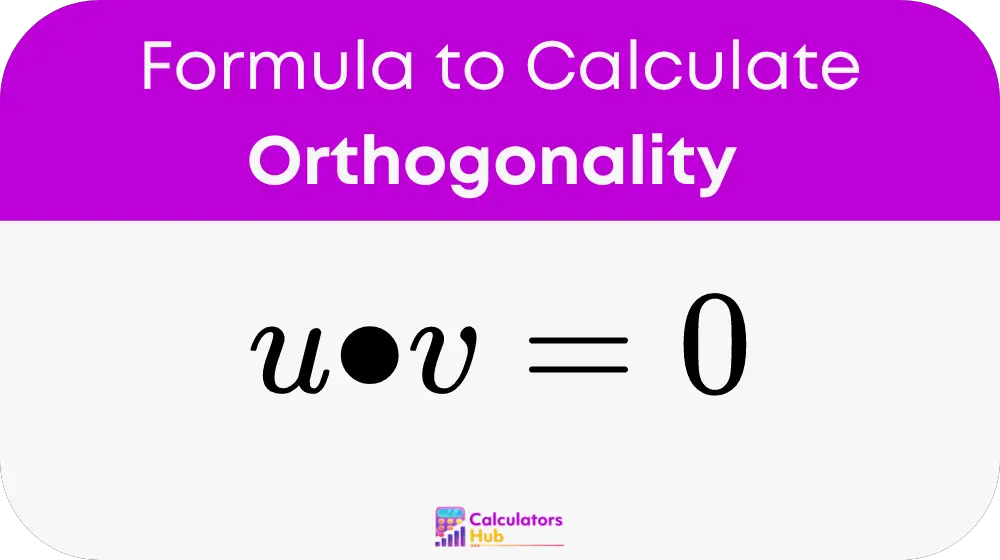An orthogonality calculator is a specialized tool designed to determine whether two vectors are orthogonal, that is, perpendicular to each other. This is particularly useful in fields such as computer graphics, physics, and engineering where orthogonality often plays a key role in designing and understanding systems and structures.
Formula of Orthogonality Calculator
The foundation of checking orthogonality between two vectors, u and v, lies in their dot product:

Here, u and v represent the vectors involved, and “•” signifies the dot product operation. If their dot product equals zero, it conclusively means that the vectors are orthogonal, indicating they meet at a right angle, an essential condition in many technical and scientific applications.
Table of General Terms
For a clearer understanding, here’s a table of commonly used terms related to vectors and their orthogonality:
| Term | Definition | Relevance to Orthogonality |
|---|---|---|
| Vector | A quantity having direction and magnitude. | Essential component in defining orthogonality. |
| Dot Product | A scalar product of two vectors. | Calculation basis for determining orthogonality. |
| Magnitude | The length or size of a vector. | Helps in normalizing vectors before testing orthogonality. |
Example of Orthogonality Calculator
Consider two vectors, u = (1, 2) and v = (-2, 1). To determine if they are orthogonal:
- Calculate the dot product: 1∗(−2)+2∗1=−2+2=0
- Since the result is zero, vectors u and v are orthogonal.
Most Common FAQs
A1: Two vectors are orthogonal if they meet at a 90-degree angle, which is mathematically confirmed if their dot product is zero.
A2: Yes, the calculator works for vectors in any dimension as the underlying principle of the dot product remains consistent.
A3: Normalization, or converting vectors to unit vectors, isn’t necessary for determining orthogonality but is useful in simplifying calculations and interpretations in practical applications.